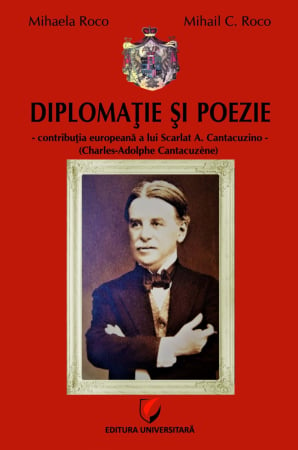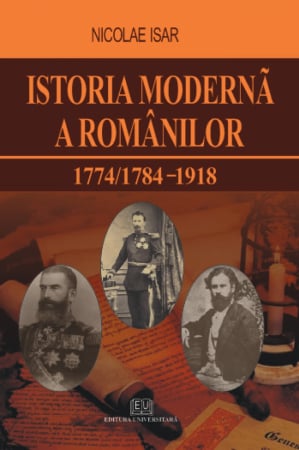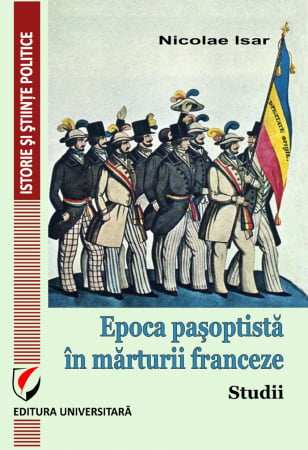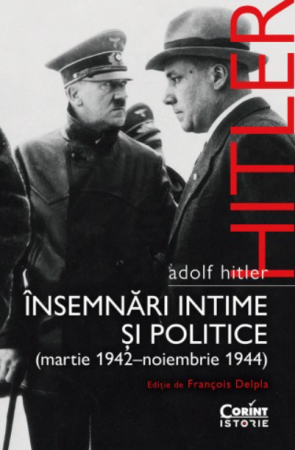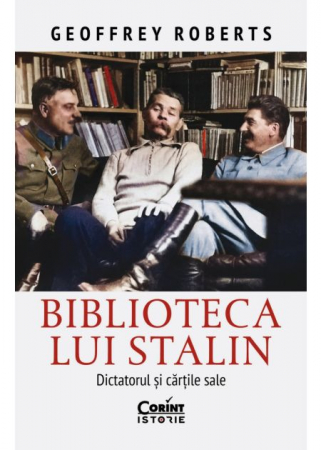Manuscript proposals: info@editurauniversitara.ro / 0745 204 115 //// Tracking orders Individuals / Sales:0745 200 718 / 0745 200 357 Orders Legal entities: 0721 722 783
Publisher: Pro Universitaria
Author: Pompiliu-Nicolae Constantin
Pages: 352
Publisher year: 2020
ISBN: 978-606-26-1242-9
Product Code:
9786062612429
Do you need help?
0745 200 718
/
0745 200 357
- Description
- Download (1)
- Authors
- Content
- More details
- Where to find it
- Reviews (0)
The book Rapidism: the history of a sports phenomenon examines the route of the Rapid Bucharest sports club, focusing its attention on the football team and the fans, without neglecting the other disciplines. The paper brings to light unknown documents, overlooked information, capitalizes on oral history and adds to all these aspects an analytical discourse on everything that has been written about Rapid Bucharest, to provide an overview of a large phenomenon in sports. Romanian. The book is addressed to all sports history enthusiasts, not only to the rapidist supporters, who will find in this work a spectacular phenomenon, well framed in the political, social and economic context.
-
Rapidism: the history of a sports phenomenon - Pompiliu-Nicolae Constantin
Download
Pompiliu-Nicolae Constantin is a historian and journalist, associate professor at the National University of Physical Education and Sports in Bucharest, where he teaches the history of sports. Doctor in history (University of Bucharest) and in political sciences (Université Libre de Bruxelles), the author is also an associate researcher of CEREFREA- University of Bucharest. In addition, Pompiliu-Nicolae Constantin is a permanent contributor to Magazin Istoric magazine (since 2013) and is a member of the most important associations in sports history: International Society for the History of Physical Education and Sport (since 2011) and European Committee for Sports History (since 2018). As a journalist, he has worked over time for Boom Sport, Sport Total FM, Dolce Sport, Telekom Sport and Look Sport.
Content
INTRODUCTION / 13
CHAPTER I.
THE CONTEXT OF THE DEVELOPMENT OF ROMANIAN FOOTBALL / 19
The appearance of football in the Romanian space / 21
The development of Romanian football after the First World War / 24
CHAPTER II.
THE INTERWAR RISE OF THE RAPID / 34
Romanian Railway Club / 35
The road to the first league / 39
Steps to the first football trophy / 47
Building a stellar team / 57
The legendary Baratky / 61
Rapid becomes the specialist of the Romanian Cup / 65
Financial problems and political implications / 72
Fight for survival / 80
Giulesti Stadium, primary identity element / 84
Football during the war / 88
CHAPTER III.
RAPIDISM and COMMUNISM / 98
Rapid Club, a political instrument in the first years of communism / 101
The railway core, an important part of the rapidist movement / 105
Establishment of departmental clubs and transfer of supporters to Rapid / 111
The obsessive second place and hard times / 117
The first demotion and the attempt to save on the political line / 123
The oscillations of the 1950s / 127s
Gallery and team symbols / 131
Rivalry with Progress / 142
1961, a year of contrasts / 144
The voices in the stands and their leaders / 149
Rapidism and the artistic world / 155
The symbol of the trumpeter: Tudorica / 159
Rapidism and similar phenomena in the communist space / 161
CHAPTER IV.
LIBERALIZATION OF COMMUNISM AND THE FIRST
TITLE OF RAPID CHAMPION / 165
Construction of a champion / 165
The myth of Valentin Stanescu / 169
The fights with Dinamo / 173
The season of historical joy / 179
Rapid's European adventure and the breakup of the champion team / 193
CHAPTER V.
UNIT PERIOD 1972-1989 / 199
A cup for fans / 199
Clandestine support / 204
An unexpected trophy / 208
He quickly gets used to Division B / 213
From "it's not like the horse" to the fight with the party / 218
A rescuing anthem in the context of football poverty / 223
Grant Bridge / 228
Death of Dan Coe / 231
Match magazine builds identity / 235
A promotion without celebration / 242
Return to Giulesti / 249
Pressures from rivals / 253
Truth told with humor / 256
The road to the fifth demotion / 261
Constantin Mincea, the voice of continuity / 263
CHAPTER VI.
REVOLUTION and QUICKLY. ONE SEASON UNDER TWO
POLITICAL REGIMES / 267
CHAPTER VII.
RAPIDISM AFTER 1989/279
The rise after 1989 of the Rapid / 283
The fallen heroes and idols of the capitalist Rapid / 295
A new generation of supporters / 304
Ultras, aristocrats, expats / 310
The myth of the drummer and the "urban tribes" / 315
Rapidism in women / 317
Victimization and conspiracy, obsession or strategy? / 321
CHAPTER VIII.
ETERNAL PROBLEMS OF RAPIDISM / 325
Otherness and racism / 325
Fast, a political vehicle? / 331
The end of the Copos era and the road to bankruptcy / 334
CONCLUSIONS / 340
BIBLIOGRAPHY / 345
INTRODUCTION / 13
CHAPTER I.
THE CONTEXT OF THE DEVELOPMENT OF ROMANIAN FOOTBALL / 19
The appearance of football in the Romanian space / 21
The development of Romanian football after the First World War / 24
CHAPTER II.
THE INTERWAR RISE OF THE RAPID / 34
Romanian Railway Club / 35
The road to the first league / 39
Steps to the first football trophy / 47
Building a stellar team / 57
The legendary Baratky / 61
Rapid becomes the specialist of the Romanian Cup / 65
Financial problems and political implications / 72
Fight for survival / 80
Giulesti Stadium, primary identity element / 84
Football during the war / 88
CHAPTER III.
RAPIDISM and COMMUNISM / 98
Rapid Club, a political instrument in the first years of communism / 101
The railway core, an important part of the rapidist movement / 105
Establishment of departmental clubs and transfer of supporters to Rapid / 111
The obsessive second place and hard times / 117
The first demotion and the attempt to save on the political line / 123
The oscillations of the 1950s / 127s
Gallery and team symbols / 131
Rivalry with Progress / 142
1961, a year of contrasts / 144
The voices in the stands and their leaders / 149
Rapidism and the artistic world / 155
The symbol of the trumpeter: Tudorica / 159
Rapidism and similar phenomena in the communist space / 161
CHAPTER IV.
LIBERALIZATION OF COMMUNISM AND THE FIRST
TITLE OF RAPID CHAMPION / 165
Construction of a champion / 165
The myth of Valentin Stanescu / 169
The fights with Dinamo / 173
The season of historical joy / 179
Rapid's European adventure and the breakup of the champion team / 193
CHAPTER V.
UNIT PERIOD 1972-1989 / 199
A cup for fans / 199
Clandestine support / 204
An unexpected trophy / 208
He quickly gets used to Division B / 213
From "it's not like the horse" to the fight with the party / 218
A rescuing anthem in the context of football poverty / 223
Grant Bridge / 228
Death of Dan Coe / 231
Match magazine builds identity / 235
A promotion without celebration / 242
Return to Giulesti / 249
Pressures from rivals / 253
Truth told with humor / 256
The road to the fifth demotion / 261
Constantin Mincea, the voice of continuity / 263
CHAPTER VI.
REVOLUTION and QUICKLY. ONE SEASON UNDER TWO
POLITICAL REGIMES / 267
CHAPTER VII.
RAPIDISM AFTER 1989/279
The rise after 1989 of the Rapid / 283
The fallen heroes and idols of the capitalist Rapid / 295
A new generation of supporters / 304
Ultras, aristocrats, expats / 310
The myth of the drummer and the "urban tribes" / 315
Rapidism in women / 317
Victimization and conspiracy, obsession or strategy? / 321
CHAPTER VIII.
ETERNAL PROBLEMS OF RAPIDISM / 325
Otherness and racism / 325
Fast, a political vehicle? / 331
The end of the Copos era and the road to bankruptcy / 334
CONCLUSIONS / 340
BIBLIOGRAPHY / 345
INTRODUCTION
Until we can travel through time, we will have to use history and its exercise to transpose us into the past. At a time when they were not ultras, and the sociology of sports had not begun to research them, romantic football provided the impetus for founding many teams. Some fell apart, others resisted. There were times when friends created sports clubs to have fun and be fashionable.
Often, the discussion about a sports club is reduced to the number of trophies it has in its record. But the history and identity of such a conglomerate is not just statistics and percentages. The soul of a sports club does not necessarily lie in numbers and trophies. Therefore, when I started the documentation for this paper, I decided to outline a broad picture of the phenomenon, which should include the manifestations of the fans, the profile of the stars, the involvement of the authorities and the role of a club administration.
Sport has long been just a means of recreation and because it has managed to have such a big impact on the world, it has come to the attention of sociologists, psychologists, anthropologists or historians. Numerous serious works are already devoted to this subject, which is subject to debate at all times. The history of sports is of increasing interest in the western area, where research institutes specialized in analyzing the sports phenomenon have been established in recent decades. In Romania, the social sciences of sport are not so visible and still do not benefit from the due attention, which has not prevented in the last decade that more researchers focus on topics in the mentioned category.
In the society after 1989, the supporters of the teams from Bucharest continued under a democratic regime the disputes they had had during the communist period. The Rapidists took over the role of the anti-communist camp, which they propagated in front of the Dinamo and Steaua clubs. Fans keep the elements that benefit them in defining their identity and that bring them arguments in the duel with their opponents. They make their principles known and promote a more or less distorted history, out of the desire to prove their superiority.
Dinamo, Rapid and Steaua were organized after 1989 on a Western model, theoretically profit-oriented, but history cannot be forgotten and neglected. While Steaua and Dinamo will boast of their record, much of which was achieved during the communist dictatorship, the Rapids respond, arguing that the trophies were facilitated by this authoritarian political regime, which set them up and imposed in the first division. As none of the camps give way, the antagonism tends to keep a clear line. Present attitudes have their roots in a rather controversial past, the underpinnings of which will probably never be fully known. Therefore, any debate of this kind must be framed in a rather nuanced historical context.
This paper comes to explain to some extent the argumentative tendencies and to reproduce the path of a special phenomenon, whose features emerge precisely from the history of the club. Rapidism is the term chosen because it is already circulating in the oral culture of sports and because it is a notion that synthesizes several elements specific to the Rapid club in general and the football team in particular. Rapidism coagulates at the same time the specific elements of supporterism, the history of sports teams, the stars who have identified with this phenomenon and appeals to a common feeling.
Supporterism goes beyond the exclusivity of the sports field and contributes to the construction and consolidation of the collective memory. More recently, studies in the humanities highlight the contribution of this social phenomenon to the definition of historical and cultural heritage. The social history of our century, but especially of the last decades, has undergone a rapid process of redefinition. The researchers' attention was focused quite seriously during this time on areas once known as aspects of privacy. Neglected for a long time, these areas of interest to the population (sports, cooking, sex life) have proved as relevant to historical knowledge as political events.
Until we can travel through time, we will have to use history and its exercise to transpose us into the past. At a time when they were not ultras, and the sociology of sports had not begun to research them, romantic football provided the impetus for founding many teams. Some fell apart, others resisted. There were times when friends created sports clubs to have fun and be fashionable.
Often, the discussion about a sports club is reduced to the number of trophies it has in its record. But the history and identity of such a conglomerate is not just statistics and percentages. The soul of a sports club does not necessarily lie in numbers and trophies. Therefore, when I started the documentation for this paper, I decided to outline a broad picture of the phenomenon, which should include the manifestations of the fans, the profile of the stars, the involvement of the authorities and the role of a club administration.
Sport has long been just a means of recreation and because it has managed to have such a big impact on the world, it has come to the attention of sociologists, psychologists, anthropologists or historians. Numerous serious works are already devoted to this subject, which is subject to debate at all times. The history of sports is of increasing interest in the western area, where research institutes specialized in analyzing the sports phenomenon have been established in recent decades. In Romania, the social sciences of sport are not so visible and still do not benefit from the due attention, which has not prevented in the last decade that more researchers focus on topics in the mentioned category.
In the society after 1989, the supporters of the teams from Bucharest continued under a democratic regime the disputes they had had during the communist period. The Rapidists took over the role of the anti-communist camp, which they propagated in front of the Dinamo and Steaua clubs. Fans keep the elements that benefit them in defining their identity and that bring them arguments in the duel with their opponents. They make their principles known and promote a more or less distorted history, out of the desire to prove their superiority.
Dinamo, Rapid and Steaua were organized after 1989 on a Western model, theoretically profit-oriented, but history cannot be forgotten and neglected. While Steaua and Dinamo will boast of their record, much of which was achieved during the communist dictatorship, the Rapids respond, arguing that the trophies were facilitated by this authoritarian political regime, which set them up and imposed in the first division. As none of the camps give way, the antagonism tends to keep a clear line. Present attitudes have their roots in a rather controversial past, the underpinnings of which will probably never be fully known. Therefore, any debate of this kind must be framed in a rather nuanced historical context.
This paper comes to explain to some extent the argumentative tendencies and to reproduce the path of a special phenomenon, whose features emerge precisely from the history of the club. Rapidism is the term chosen because it is already circulating in the oral culture of sports and because it is a notion that synthesizes several elements specific to the Rapid club in general and the football team in particular. Rapidism coagulates at the same time the specific elements of supporterism, the history of sports teams, the stars who have identified with this phenomenon and appeals to a common feeling.
Supporterism goes beyond the exclusivity of the sports field and contributes to the construction and consolidation of the collective memory. More recently, studies in the humanities highlight the contribution of this social phenomenon to the definition of historical and cultural heritage. The social history of our century, but especially of the last decades, has undergone a rapid process of redefinition. The researchers' attention was focused quite seriously during this time on areas once known as aspects of privacy. Neglected for a long time, these areas of interest to the population (sports, cooking, sex life) have proved as relevant to historical knowledge as political events.
www.editurauniversitara.ro
If you want to express your opinion about this product you can add a review.
write a review
Customer Support Monday - Friday, between 8.00 - 16.00
0745 200 718 0745 200 357 comenzi@editurauniversitara.ro

![Rapidism: the history of a sports phenomenon - Pompiliu-Nicolae Constantin [1] Rapidism: the history of a sports phenomenon - Pompiliu-Nicolae Constantin [1]](https://gomagcdn.ro/domains/editurauniversitara.ro/files/product/large/rapidism-the-history-of-a-sports-phenomenon-pompiliu-nicolae-constantin-3138-2339.png)
